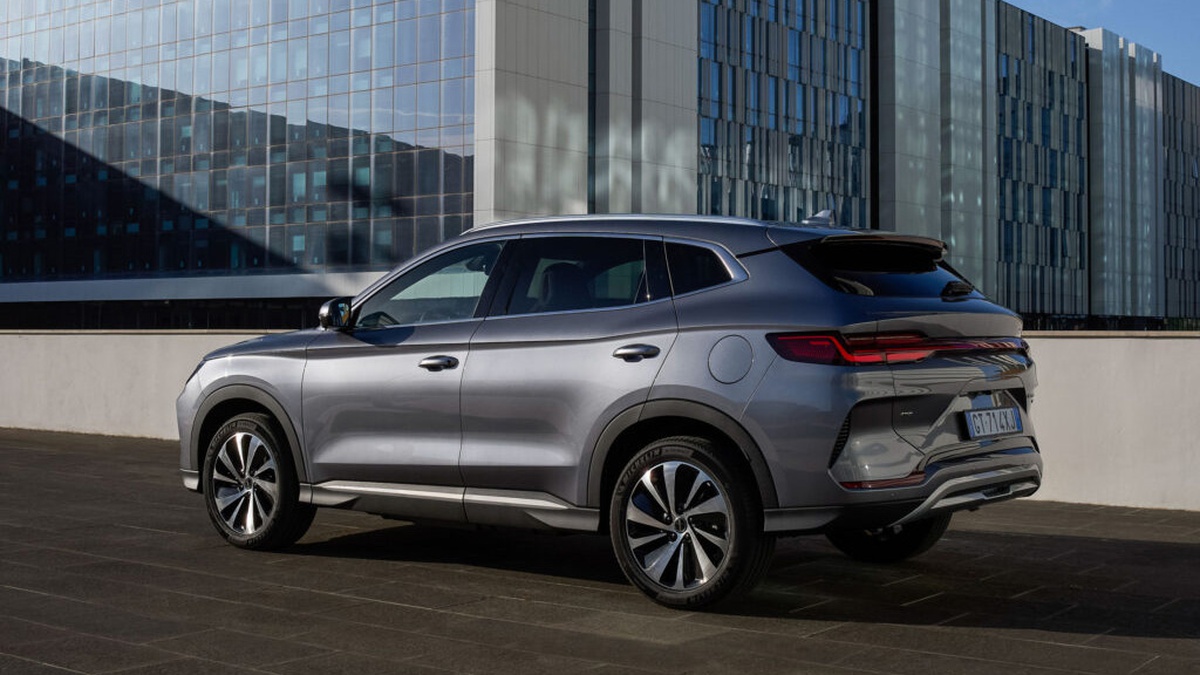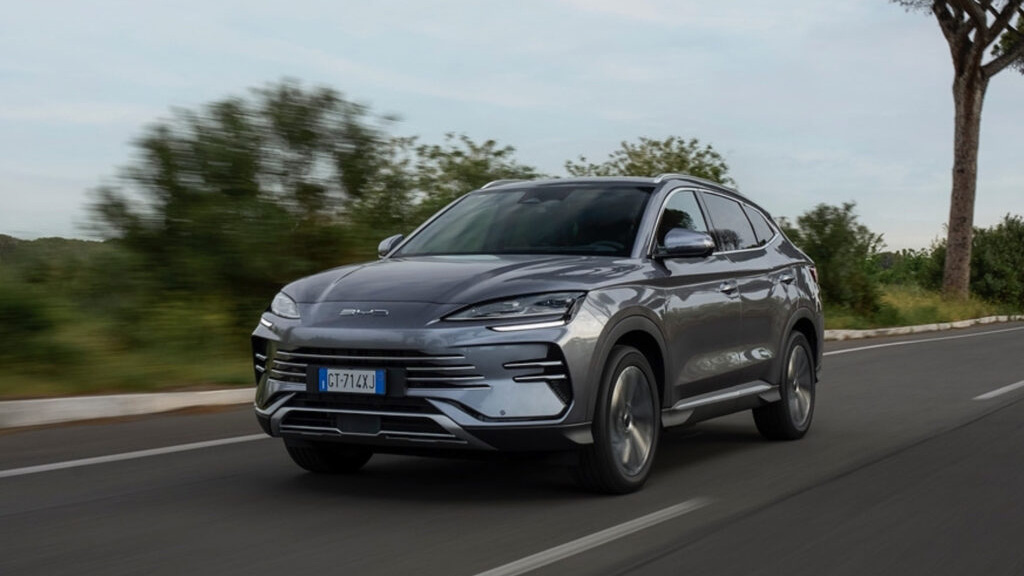The Seal U DM-i designed to rival popular models like the Volkswagen Tiguan, Ford Kuga, and Toyota RAV4. It features three powertrain options: Boost, Comfort, and Design. Each is tailored to offer varying levels of power and efficiency.
The Boost model features a front-wheel-drive system powered by a 1.5-liter naturally-aspirated engine paired with an electric motor. Together they produce 218 hp and 300 Nm (221 lb-ft) of torque. This model boasts an electric range of 80 km (50 miles) from its 18.3 kWh battery.
The Comfort option upgrades the battery capacity to 26.6 kWh extending the range substantially to 126 km (78 miles) on electricity alone, retaining similar mechanical specifications as Boost.
The Design variant steps up significantly, offering an all-wheel-drive experience powered by a turbocharged engine paired with two motors for a combined output of 324 hp and notable acceleration from 0 to 100 km/h (0-62 mph) in 5.9 seconds. Its electric range stands at approximately 70 km (43 miles) due to higher performance demands.




BYD Seal U DM-I Plug-In Hybrid
BYD has packed a lot into the Seal U's five-seat cabin, including a 15.6-inch rotating infotainment screen, dual smartphone chargers, and V2L capability, which allows owners to use the car to charge portable devices when there's no available power source nearby.
In terms of reliability promises, BYD does not hold back with their warranty offerings: eight years or up to 200,000 kilometers (125,000 miles) for the battery maintaining at least 70 percent capacity and six years or up to 150,000 kilometers (93,750 miles) for the vehicle warranty.
By introducing multiple powertrain selections coupled with substantial electric ranges and robust warranty coverages, BYD positions itself favorably against traditional competitors in Europe's automotive market. This strategic move highlights an ongoing shift towards electrification in transportation influenced heavily by innovation from Chinese manufacturers such as BYD.
Source: BYD

